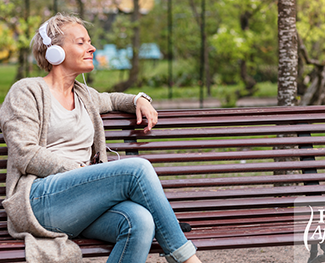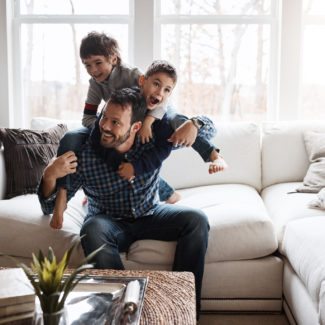On the COVID-19 pandemic’s third anniversary, we’re pausing to honor the 6.6 million lives lost, reflect on the profound experience this disease has had on us as survivors, and look for meaningful paths forward. In the first of this two-part series on moving from a state of survival to conditions for thriving, we looked at how American lives have collectively changed over the course of this ongoing public health crisis. In this article, we turn our attention to what happens when we pause and reflect on the lives we lead.
COVID-19: Reflection Mode
Because of the massive disruption COVID-19 had on billions of lives, a disruption that caused significant changes in our everyday behaviors, over time we slowly moved from survival mode [link survival mode to March blog post] toward lockdown reflection. And what we seemed to notice during this time was our mental health is paramount.
Such a big disruption naturally makes people ponder big questions. To pause. To notice. And while on a societal level, we seemed to be waking up to inequalities within our operating systems, racial and otherwise, on a personal level it looked like a series of ambiguous, philosophical questions. Presented with so many deaths in a short time span, we asked ourselves: How do we live a life of meaning?
How COVID-19 Changed Our Ideas about Work
There is, of course, no single answer to how to live a meaningful life. It was clearly on many people’s minds, though. The question quietly rang behind social shifts we saw in the second and third years of the COVID pandemic. The Great Resignation, aka the Big Quit, the Great Rethink, or the Great Reshuffle, saw people leaving the workplace in droves: leaving for safety concerns, because of burnout, inadequate support from companies, and the need for childcare (which is closely tied to the issue of unpaid care work), or people who discovered they wanted autonomy or meaning in their work, or more money as the labor market tightened. Resignation rates remain high. “People are now looking at work and the role they want it to play in their lives in a different way, and switching to jobs that better align with their new values,” writes Kate Morgan for the BBC.
Like the Black Lives Matter movement, the Great Resignation may have gotten its spark from the pandemic, but the embers had been building long before COVID came to be. Quit rates have been steadily increasing over the past decade. Wages have stagnated for decades, and minimum wage has not been keeping up with rate of inflation. There is an American culture of presenteeism and widespread burnout in the workplace. The pandemic wasn’t the cause, per se—but it may have been the collective taking in of breath and deciding factor for workers to act on their mounting dissatisfaction. Many of us are looking for ways to restore wellbeing, and our professional lives are a natural place to ponder.
Just as pausing to engage in deep breathing, meditation, and other coping strategies helps our mental health, the collective pause caused by COVID-19 has helped create a shift in priorities. It allowed us time to reevaluate society. What’s working? What isn’t? What can I do about it? How am I spending my time, which is ultimately my life? Rethinking the workplace—where, how, and why we work—is part and parcel of that process. After all, one-third of the average American’s life is spent at work. Some may prefer to work remotely, work less, go into private practice, switch jobs, or any number of configurations that align more closely with their idea of meaning and success.
One method to considering how you spend your time is viewing time management not through the lens of productivity but that of mortality. Rather than cramming in as many work products as you can into every hour, attempting perfection, or delaying creative work because of busy culture, scale grander. As Oliver Burkeman writes in the book 4,000 Weeks: Time Management for Mortals, we suffer when we engage in “causal catastrophe,” or treating every moment as a means to some future end. He, like many others, stresses the importance of enjoying the now and connecting with others.
How COVID-19 Revived Self-Care
The pandemic lockdown was a poignant reminder that loneliness hurts our health. Being isolated can have serious consequences on our minds and bodies. We are, after all, social animals. Presented with a widespread public health problem, we reconsidered what it means to be happy and live a fulfilling and purposeful life. In addition to shifts in the way we work, we are starting to see a revived focus on mental wellness and self-care as a result of those inquiries.
With COVID’s stark reminder that life is short, Americans are slowly unraveling the myths of the busyness badge and that taking time to take care for oneself is frivolous. Self-care is not self-indulgence. As therapists, we know it’s a vital part of coping with stress and restoring mental wellbeing.
In addition to more importance placed upon mental health and wellness, another silver lining from the pandemic for mental and behavioral health services may be that access to care has increased as a result of telehealth. It’s become much more commonplace to remotely visit a therapist or substance use counselor, which has important implications for how we can provide support to rural patients across the large state of Maine. Telehealth has removed geographical barriers to mental health services that some have unfortunately experienced in the past. And the more normalized work-from-home office has helped some people find the flexibility in their work schedules to attend therapy appointments.
COVID-19: Imagination Mode
The calls for “back to normal” we heard mid-pandemic were largely calls coming from those who profited by what normal was pre-pandemic. It’s imperative that we continue to question and reflect on our values and imagine and shape our collective future accordingly. What can you picture? How can you align your life to your values? How can we reimagine and rebuild society so that it values equality, justice, and collaboration, or any number of core values that resonate with us? What does it look like to become a nation where, as Jean Accius of AARP puts it, “race and other social demographic factors do not determine your ability to live a longer, healthier and more productive life”?
We’ve had COVID-19 survival and reflection modes. Let’s enter a COVID-19 imagination mode. Let’s ask ourselves: What future do we want to create?
Sign Up To Receive Our Latest Blog Posts!
Learn more tips on living well and understanding mental illness. Help to end the stigma, and hear inspiring stories of recovery. Sign up here!



